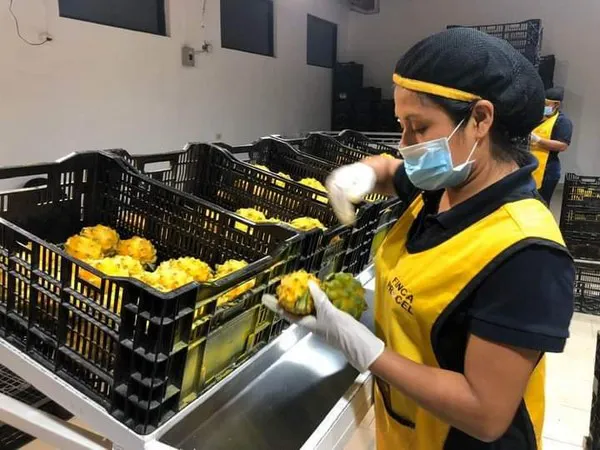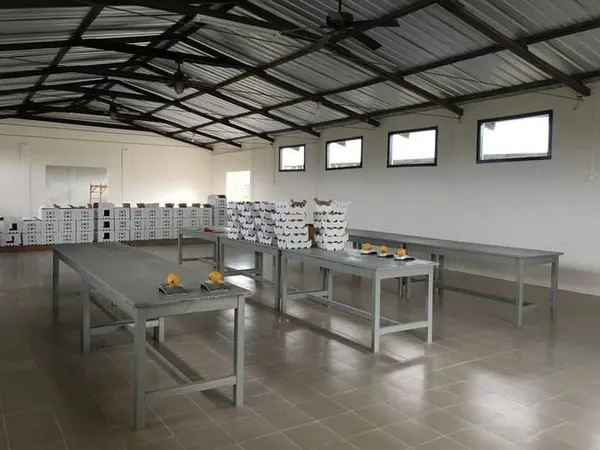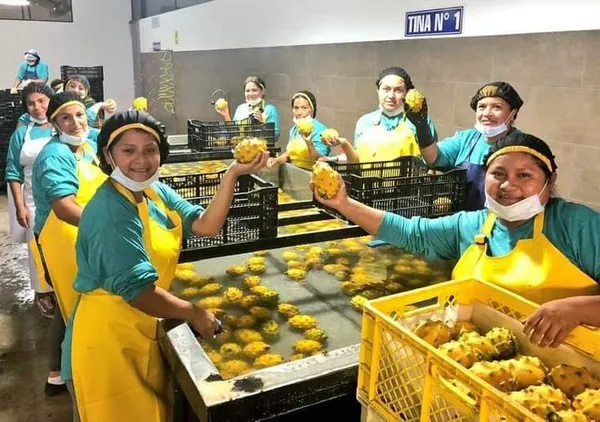Pitahaya production in Ecuador is quickly growing and the country is moving into the position of a key supplier in the world market.
According to the Palora Exotic Fruit Exporters Association, it was only 20 years ago that significant production of the exotic fruit began--first of the yellow pitahaya and then 10 years later, red pitahaya.
“Exponential growth occurred nine years ago when cultivation began in an organized manner and then after 2016 when it began its export,” says Francisco Ortega of the association.
In all, there are 13 provinces where pitahaya is grown in Ecuador with the Palora canton being the place with the most extensive cultivation of yellow pitahaya.

The region of Palora
“Palora is the most important place at the regional level and is known for its high volumes, quality and innovation,” says Ortega, adding that Palora represents 55 percent of total exports as of October 2021. He also notes that Ecuador, by adding red pitahaya and Amarilla, exported 14,070,700 kilos of pitahaya in 2021--of which 7,716,385 kilos are yellow pitahaya from Palora.
With this kind of growing production, an association was formed, the Association of Exotic Fruit Exporters Palora, in 2017. The association began with four members at that time. “And as of today, we are 10 members of which we move the largest volume of fruit for export--we have the largest market share,” says Ortega.
The goal of the association was to collaboratively focus its efforts on opening new markets as well as making technological and sustainability gains in production. Collectively, the association brings all those in the pitahaya production chain together including producers, local fruit merchants, pitahaya exporting companies, municipal government, Agrocalidad and transport and logistics companies.

Developing Ecuadorian production
The association is also focusing on the growing cultivation of pitahaya in Palora. “In this place, there are about 4,500 hectares of yellow pitahaya cultivation where small producers who own between two and three hectares represent 80 percent of the total production,” says Ortega, adding that there is also approximately 1,100 hectares of red pitahaya with about 500 new crops. “And the cultivation areas, in general, continue to grow day by day.”
Looking ahead, future projections are significant. By 2027, red pitahaya hectares should be at 3,000 hectares while yellow will be at 6, 042 hectares with approximately 60,421,714 tons of production, of which 70 percent will be for export. “The yellow variety is more desired by international markets because it is less well known and its flavor, color and characteristics are much more attractive. Its flavor usually exceeds 24 degrees Brix,” said Ortega. “This has helped its exponential growth.”
The association’s objective is to also develop new and current markets for export including Peru, Mexico and the U.S. And also, China.
“We have been preparing for this market for many years and are waiting for its opening so that Chinese consumers can taste the quality of our pitahaya,” says Ortega. Opening the Chinese market has been in the process for four years. However, efforts stagnated because of the global pandemic.

The Chinese market
The association feels China is an optimal market for Ecuadorian pitahaya for a few reasons. “Palora, due to its geography, has year-round production where its sizes are very good and it’s helped by its color and flavor. This makes it very different from the Chinese yellow pitahaya grown mostly on the island of Hainan in the Siuxi county of the Leizhou peninsula with about 6,800 hectares, according to the county agricultural office,” says Ortega. China is also home to more than 4,000 wholesale markets and the association’s intelligence has determined that Xinfadi from Beijing and then Jiangnan in Guangzhou are very good opportunities for Ecuadorian fruit.
And the opening of China to Ecuadorian pitahaya gets closer daily. At the end of January, Ecuadorian president Guillermo Lasso traveled to China and part of the trip’s objectives included finalizing negotiations for the official entry of Ecuadorian pitahaya into China.
“We hope in the following weeks that we will have the document signed and begin the review of the work plan protocol. We hope it will be carried out in an organized manner so that we can send our first shipment of yellow pitahaya to China at the end of the year, complying with all phytosanitary requirements,” says Ortega.
For more information:
Francisco Daniel Ortega
Palora Exotic Fruit Exporters Association
Tel: (593) 0988840791
aso.exportadorespalora@gmail.com
fransisort@gmail.com
